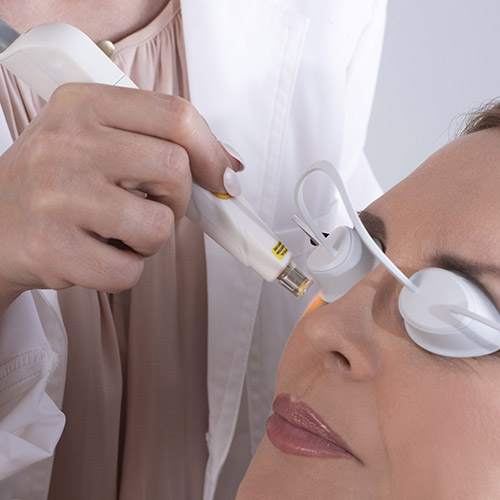

Comprehensive eye exams are important to assess the anatomy of the eye and to help detect health issues without symptoms. With every eye exam, we do more than check to see if you need glasses. Your eye doctor, optometrist, conduct eleven tests to ensure your eyes are functioning properly.
If you don’t have glasses or contacts already, a good rule of thumb is for adults to have a dilated eye exam every one to two years. A child’s eyes should be examined prior to entering kindergarten. A child has visual milestones to meet such as color identification and depth perception.
As a result we put more focus on a child’s teaming skills (the ability for the eyes to work together), eye movement and focusing system during an exam. Eighty percent of learning is done through a child’s vision. We want you to have the peace of mind that your child’s eye sight doesn’t keep him/her from performing well in school.
- Visual acuities: How well you see objects close up and far away
- Cover test: Ensures your eyes work together properly
- Extra ocular muscles: Ensures your eyes have full range of motion
- Confrontational field: Tests your peripheral vision
- Refraction: Determines the level of prescription for glasses
- Pupils: Ensures your pupils dilate and constrict equally and consensually when exposed to different amounts of light
- Tonometry: Checks the pressure within your eyes
- Color vision: Tests for any color deficiency
- Stereovision: Checks your depth perception or ability to see in three dimensions
- Slit lamp: Determines the health of the front part of your eye
- Fundus examination: Checks the back part of your eye for signs of disease
Frequency of exams
How often someone should have an eye exam is different for everyone depending on age, lifestyle and medical history. Eye wear and contact lens prescriptions often dictate when a person gets their eyes checked. In general these prescriptions are good for one year and an eye exam is recommended when the prescription expires.If you don’t have glasses or contacts already, a good rule of thumb is for adults to have a dilated eye exam every one to two years. A child’s eyes should be examined prior to entering kindergarten. A child has visual milestones to meet such as color identification and depth perception.
As a result we put more focus on a child’s teaming skills (the ability for the eyes to work together), eye movement and focusing system during an exam. Eighty percent of learning is done through a child’s vision. We want you to have the peace of mind that your child’s eye sight doesn’t keep him/her from performing well in school.

.jpg?width=500&height=500&ext=.jpg)

